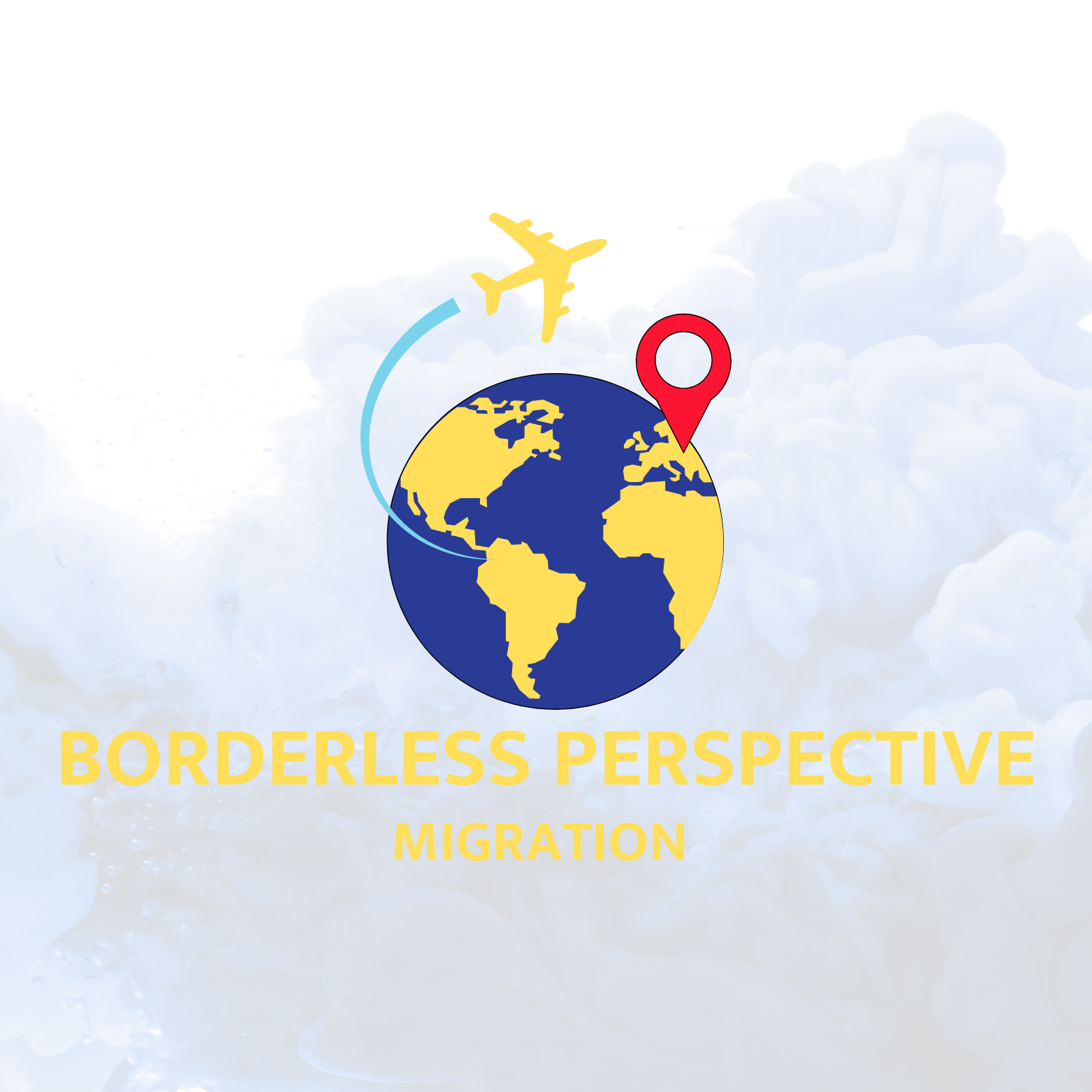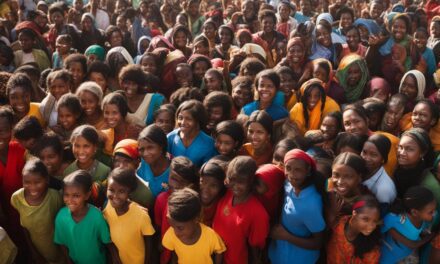
The global movement of people is undergoing significant changes with diversifying migration flows. Migration trends are shifting, and the traditional migration patterns are giving way to new landscapes. This evolution is reshaping the global migration patterns, creating a diverse and dynamic immigration landscape.
According to various sources, including the Organization for Economic Cooperation and Development (OECD), migration flows that were interrupted by the global economic crisis in 2008 have now resumed to many developed economies. Traditional immigrant-receiving countries like the United Kingdom and France continue to see significant new immigration, while the United States may experience a slight increase in Mexican migration. However, emerging economies such as Brazil, China, and South Africa are also attracting international students and labor migrants, shifting the focus away from traditional destinations.
These evolving migration routes and shifting migration demographics present both opportunities and challenges for migrants and host countries. As the global movement of people becomes more diverse, it is essential to understand and adapt to these changes to ensure the well-being and integration of migrants into society.
Key Takeaways:
- Diversifying migration flows are reshaping global migration patterns
- Migration trends are evolving and shifting towards new destinations
- Traditional immigrant-receiving countries continue to attract significant new immigration
- Emerging economies are attracting international students and labor migrants
- These changes create new opportunities and challenges for migrants and host countries
Diversifying Migration Flows: Reshaping the Global Movement of People
Trends in Migration Patterns and Policies
The global movement of people is undergoing significant changes, leading to the diversification of migration flows. This shift in migration patterns has profound implications for countries worldwide. As migration trends continue to evolve, it becomes essential to understand the emerging migration trends, evolving migration routes, and intercontinental migration patterns shaping these new migration landscapes.
A comprehensive report by the International Organization for Migration (IOM) highlights the influence of migration on cities and urbanization. The report emphasizes the role of diversifying migration flows in reshaping migration patterns and policies. It underscores that nearly one in five migrants resides in the world’s top 20 largest cities, with small cities in Asia and Africa experiencing rapid growth and expected to absorb the majority of future urban population growth.
These evolving migration routes and patterns contribute to intercontinental migration, characterized by temporality and circularity. Internal migration, driven by economic opportunities, plays a significant role in shaping migration trends within and between countries. Understanding these evolving patterns can inform policy decisions and social interventions to ensure the well-being and integration of migrants into their host societies.
“Migration is no longer solely focused on traditional immigrant-receiving countries. Emerging economies such as Brazil, China, and South Africa are attracting international students and labor migrants, diversifying the migration landscape and presenting new opportunities and challenges.”
| Emerging Migration Trends | Evolving Migration Routes | Intercontinental Migration Patterns |
|---|---|---|
| – Increasing migration to emerging economies | – Shift away from traditional destinations | – Temporality and circularity of migration |
| – Attracting international students and labor migrants | – Rising importance of small cities | – Economic opportunities as drive for internal migration |
| – Opportunities and challenges for migrants and host countries | – Diverse migration landscapes | – Shaping migration within and between countries |
By understanding and adapting to these changing migration patterns, countries can develop inclusive urban governance strategies that promote sustainable development and enhance the societal integration of migrants. Such strategies should ensure equitable access to healthcare services, address social determinants of health, and create opportunities for migrants to actively participate in host communities. Incorporating migration into global sustainable development frameworks will help foster a more equitable and inclusive society, regardless of individuals’ migration status.
- Emerging migration trends present new opportunities for both migrants and host countries.
- Evolving migration routes and landscapes require adaptable migration policies.
- Intercontinental migration patterns highlight the importance of internal migration.
- Inclusive urban governance strategies can promote the well-being and integration of migrants.
Diversifying Migration Flows: Reshaping the Global Movement of People
Migration and Health Disparities
A growing body of research highlights the impact of migratory patterns on the health and well-being of individuals. Immigrants often face significant health disparities compared to the native population, stemming from a combination of factors such as limited access to healthcare services, cultural differences, and language barriers. These challenges pose unique obstacles for immigrants in maintaining good health and accessing appropriate medical care.
Studies have shown that immigrants, particularly those from low-income backgrounds, may experience higher rates of chronic diseases, mental health issues, and communicable diseases. This can be attributed to various social determinants of health, including socioeconomic status, living conditions, and healthcare accessibility. Furthermore, immigrants often encounter difficulties navigating the healthcare system due to language barriers and limited knowledge of the available resources.
“The health disparities faced by immigrants are a pressing concern that requires attention and action,” says Dr. Maria Rodriguez, a leading expert in migration and health.
“Addressing these disparities requires a multi-faceted approach that involves improving healthcare access, promoting culturally competent care, and addressing the social determinants of health that contribute to these disparities.”
Immigrants’ Access to Healthcare
Ensuring equitable access to healthcare services for immigrants is crucial to promoting their well-being and optimizing population health. Efforts to improve access need to consider the specific needs and challenges faced by immigrants, such as language barriers, cultural differences, and lack of information about available resources.
“It is essential to develop policies and initiatives that facilitate immigrants’ access to healthcare,” emphasizes Dr. Sarah Thompson, a public health advocate.
“This includes providing language interpretation services, culturally sensitive healthcare providers, and educational campaigns to raise awareness about available healthcare resources.”
To address the issue of immigrants’ access to healthcare, some countries have implemented innovative solutions. For example, the United Kingdom has established language interpretation services in healthcare settings, ensuring that language barriers do not impede immigrants’ access to care. Additionally, community health centers in the United States have implemented cultural competency training for healthcare providers to better understand the unique needs of immigrant populations.
A Call for Action
Recognizing the impact of migration on health and well-being, there is a growing consensus among experts and policymakers that action is needed to address the health disparities faced by immigrants. Developing migrant-inclusive urban governance strategies that prioritize equitable access to healthcare services and address the social determinants of health is essential.
“By promoting migrant-inclusive policies and initiatives, we can create healthier and more inclusive communities for all individuals, regardless of their migration status,” asserts Dr. Rodriguez.
To achieve this, collaboration between governments, healthcare providers, and community organizations is crucial. By working together, we can ensure that immigrants have the support they need to lead healthy lives and contribute to their host societies.
| Health Disparities Faced by Immigrants | Factors Contributing to Health Disparities | Solutions and Initiatives |
|---|---|---|
| Higher rates of chronic diseases | Socioeconomic status | Language interpretation services |
| Mental health issues | Living conditions | Culturally competent care |
| Communicable diseases | Healthcare accessibility | Educational campaigns |
Conclusion
The future of managing and embracing diversifying migration flows lies in the development of innovative and inclusive strategies. To address the challenges and seize the opportunities presented by these evolving migration trends, it is crucial for countries to adopt future-oriented initiatives.
A key aspect of these initiatives is the implementation of migrant-inclusive urban governance. By creating policies and frameworks that consider the diverse needs of migrants, host countries can foster a sense of belonging and empowerment among the migrant population. This approach not only promotes social cohesion but also contributes to the overall sustainable development of societies.
Moreover, sustainable development is a critical element in addressing the complexities associated with diversifying migration flows. By integrating migration into the global sustainable development framework, countries can ensure that the rights and well-being of migrants are prioritized. This includes providing equitable access to healthcare services, addressing social determinants of health, and fostering opportunities for migrants’ integration and active participation in society.
In conclusion, by embracing future initiatives, prioritizing migrant-inclusive urban governance, and adopting sustainable development approaches, nations can create a more equitable and harmonious world for migrants and host communities alike. It is through these concerted efforts that the diverse potential of migration can be fully realized, enriching societies and fostering a brighter future for all.
FAQ
What are some of the main trends in migration patterns?
Migration patterns are diversifying, with emerging economies such as Brazil, China, and South Africa attracting international students and labor migrants. Traditional immigrant-receiving countries like the United Kingdom and France continue to see significant new immigration. The United States may also experience a slight increase in Mexican migration.
How does migration impact urbanization?
Migration plays a significant role in shaping urbanization. Nearly one in five migrants live in the world’s top 20 largest cities, and small cities in Asia and Africa are expected to absorb most of the future urban population growth. This contributes to intercontinental migration patterns characterized by temporality and circularity.
What vulnerabilities do migrants face?
Migrants face barriers to accessing resources and specific forms of vulnerability, particularly migrant women. They may also experience health disparities compared to the native population due to factors such as language barriers, cultural differences, and limited access to healthcare services.
How can we address the health disparities faced by migrants?
It is crucial to develop migrant-inclusive urban governance strategies that ensure equitable access to healthcare services. Additionally, addressing social determinants of health, such as socioeconomic status and living conditions, is essential in promoting migrants’ well-being in host countries.
How can we promote a more inclusive society for migrants?
By incorporating migration into the post-2015 global sustainable development framework, countries can work together to create opportunities for migrants’ integration and active participation in society. This includes developing migrant-inclusive urban governance strategies and promoting equitable access to healthcare services.
MORE SOURCES TO READ:
- https://www.migrationpolicy.org/article/migration-flows-rise-diversify-global-economy-stumbles-toward-recovery
- https://publications.iom.int/books/world-migration-report-2015-migrants-and-cities-new-partnerships-manage-mobility
- https://www.ncbi.nlm.nih.gov/pmc/articles/PMC7053782/
![]()












Recent Comments